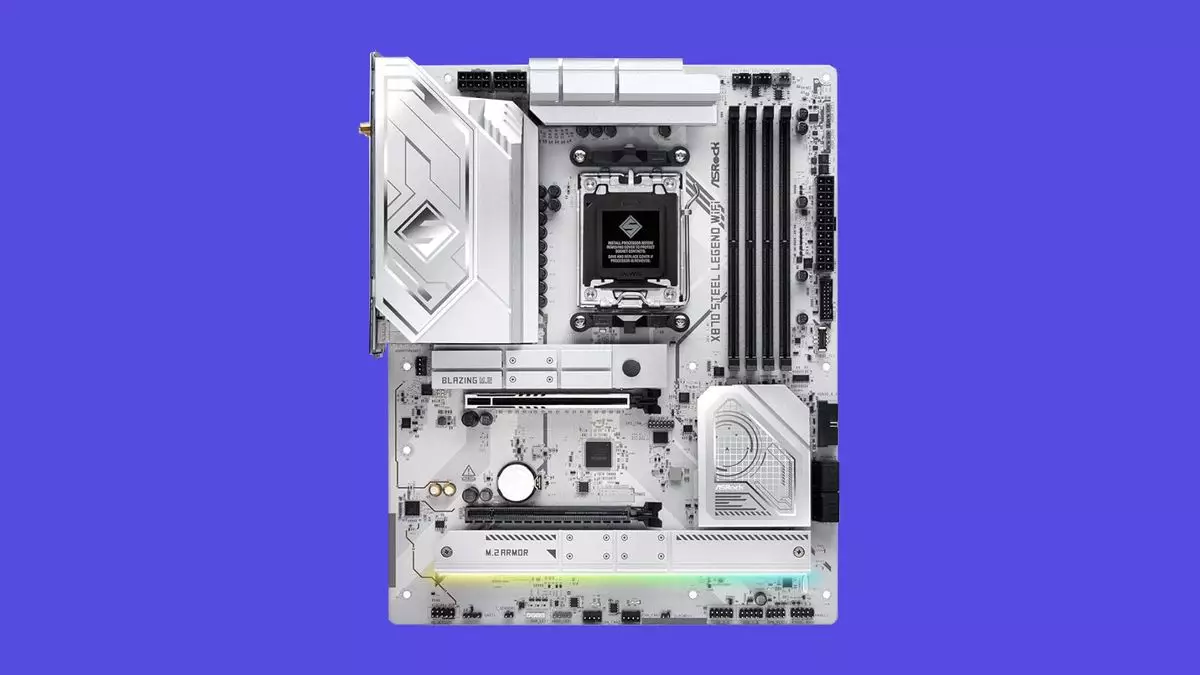The tech ecosystem can often resemble a tumultuous sea, where unexpected waves of malfunction can unsettle the most stable ships afloat. In the realm of motherboards and CPUs, the recent incidents involving toasted AMD Ryzen 9000 chips and ASRock’s X870 motherboards have stirred up quite the controversy. While many tech enthusiasts eagerly await answers, the truth may be entwined with a shocking—yet somewhat mundane—culprit: crumbs. This unique situation beckons a closer examination not just of the hardware itself, but of how such failures can impact consumer trust and brand integrity.
Anecdotal Evidence and the Crumb Conundrum
The story began to unfold back in February, when users on popular forums raised alarms about their Ryzen 9000 CPUs sustaining serious damage while operating on ASRock’s X870 motherboards. Since then, ASRock’s research led them to retrieve a defective motherboard for analysis, and its findings have been shocking in that they challenge our conventional understanding of hardware failures. According to ASRock’s blog post, the damaged motherboard revealed no visible signs of distress around its Voltage Regulation Modules (VRMs). Surprisingly, after cleaning out debris from the CPU socket, the motherboard booted up successfully. This revelation poses a multitude of questions about how crumbs from local environments could lead to catastrophic failures, even in seemingly robust hardware.
Engineering Resilience: A Testament to Design Integrity
It’s easy to dismiss the findings as trivial, but the ability of the motherboard to operate normally after debris removal speaks volumes about its engineering resilience. Not many components would survive such an ordeal and still retain functional integrity, showcasing that while manufacturers emphasize aesthetic and functional design, the underlying architecture can often transcend initial setbacks. However, the question remains whether the uniqueness of this particular motherboard can serve as a broad indicator of the entire line’s reliability.
ASRock attempts to distance itself from the blame, emphasizing that the existing BIOS versions do not cause CPU damage. Instead, the company unveiled BIOS 3.20, designed explicitly to resolve booting issues that plagued users with certain CPU combinations. This strategic pivot basically shields the motherboard maker from any systemic accountability, substituting hardware considerations with a software fix. However, by banking on new BIOS updates, does ASRock risk the trust of its consumers, pushing the responsibility for maintaining product integrity onto the users themselves?
The Wider Implications for Consumer Trust
Consumer trust is a precious commodity in the tech industry, often fragile and easily shattered. ASRock’s proactive approach—reaching out to affected users, conducting thorough inspections, and raising awareness about the potential hazards posed by improperly maintained hardware—could bolster its standing. Yet, for every step taken, there will undoubtedly be skeptics wondering if they can ever truly trust X870 motherboards again, especially if systemic flaws exist.
The company now faces the daunting task of regaining consumer trust while addressing a deeper anxiety associated with the potential fragility of the technology we increasingly depend on. Recall that many users invest not just financially, but emotionally into their builds, treating them as extensions of personal identity. If these devices fail catastrophically, the ripples will affect not just immediate users but the brand’s market reputation.
An Ongoing Investigation: The Need for Rigorous Analysis
It’s evident that a single motherboard’s fate should not dictate a company’s entire product line. However, in an industry that thrives on meticulous data analysis and user feedback, ASRock stands at a crossroads. The company has acquired several faulty units for inspection, yet until broad statistical data become available, speculations surrounding the X870 motherboards will likely proliferate.
The situation reflects an essential truth in technology: focus on data-driven decision-making. Until a comprehensive analysis can be conducted, ASRock risks letting a narrative develop that could profoundly alter the consumer perception landscape. In a world where technology evolves at an unprecedented rate, establishing a rigorous framework for incident investigations will not merely patch up cracks in reputation; it represents an invaluable opportunity to bolster user experience and confidence going forward.
This evolving saga underlines the intricate relationship between design, failure, and consumer expectations in a time where reliability should be the cornerstone of technological advancement. With ASRock navigating uncharted waters, it remains to be seen how they will turn this challenge into a triumph.

